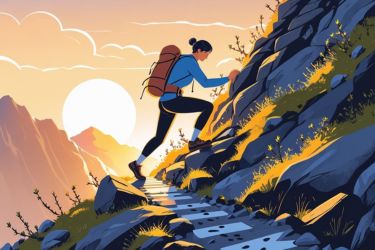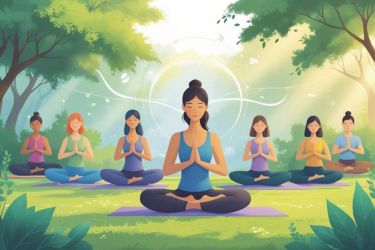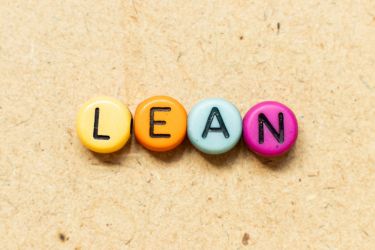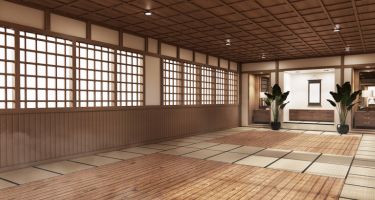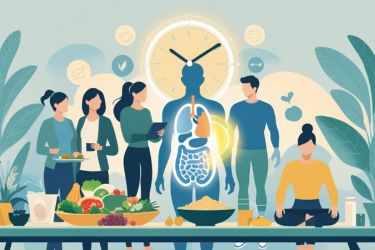Many of us feel life is moving too fast, leaving little room to pause and savour the moment. The slow movement offers an alternative, encouraging us to be more mindful about how we live, work, and enjoy our time. The slow movement is a cultural initiative that helps us reduce the pace of modern life and create more meaning and balance—something many of us are now seeking.
From its beginnings in the 1980s, the slow movement has spread into areas like food, fashion, and overall lifestyle. Its core idea is simple: do things at the right speed, be present, and focus on what matters most to us. Many are discovering how a slower, more conscious approach can bring more fulfilment and better wellbeing.
If we’re ready to rethink our routines and experience a clearer sense of purpose, exploring the principles of the slow movement could make a real difference in our daily lives.
Key Takeaways
- The slow movement helps us live more mindfully and intentionally
- It began in the 1980s and now touches on food, fashion, and wellbeing
- Slowing down can improve fulfilment and balance in our lives
Origins and Evolution of the Slow Movement

The slow movement started as a response to rapid changes in society. It has grown into an influential philosophy that challenges our pace of life and advocates for a more mindful approach.
Historical Context and Founders
The slow movement began in Italy during the 1980s. A major event was the planned opening of a McDonald’s near the Spanish Steps in Rome, which sparked protests among locals.
Carlo Petrini, an Italian journalist and activist, became a founding figure. Together with 61 others, he started the Slow Food movement in 1986. They aimed to protect traditional cuisine, support local farmers, and resist fast food culture.
This initiative spread across Europe and beyond, laying the foundation for a broader slow movement. Over time, it grew from food to include areas like travel, education, and even work practices. We can see the influence of these ideas worldwide today, shaping lifestyles focused on quality and balance rather than speed.
The history of the slow movement shows how a small protest turned into a cultural revolution.
Emergence in Response to the Culture of Speed
The slow movement arose as a reaction to the so-called “culture of speed” that became widespread during industrialisation and globalisation. This culture values doing things quickly, often at the expense of quality and satisfaction.
Fast food, instant messaging, and express delivery became the norm. Many of us started to feel life was too rushed and stressful, leading to burnout and less meaningful connections. The slow movement challenged this by promoting balance and encouraging us to be fast when needed but slow when necessary.
By valuing time for rest, connection, and quality, the slow movement gained supporters who were looking for a calmer way to live. For a deeper dive, visit the history of slow living and the slow movement.
Key Principles:
- Balance speed with slowness
- Focus on quality over quantity
- Make intentional lifestyle choices
Influence of Paul Virilio and Dromology
Paul Virilio, a French cultural theorist, played a major role in discussing the effects of speed on society. He introduced the concept of “dromology,” the study of speed, and explored how technology changes our perceptions and daily life.
Virilio argued that speed affects not only how we work and travel but also how we think. He believed rapid technological progress often comes at a cost, undermining local cultures and relationships. Dromology gave us a way to understand the dangers of living too fast, such as feeling disconnected or overwhelmed.
The slow movement draws on Virilio’s ideas to highlight why we should question always moving faster. Instead, it asks us to find a better rhythm and restore a sense of control and meaning in our lives.
Core Principles and Slow Philosophy

Slow philosophy challenges the idea that faster is always better. We explore how choosing quality, fostering inclusion, and shifting our culture can help lead to a more thoughtful way of living.
Quality over Quantity
We often feel pressure to do more and own more. The Slow Movement encourages us to make deliberate choices. By focusing on quality, whether it is in our relationships, food, or work, we value experiences that matter most. This mindset does not mean rejecting all modern innovations or speed.
Instead, we aim to prioritise depth and meaning, choosing fewer but better items, activities, and experiences. We can apply this principle through simple steps, such as preparing homemade meals or dedicating real attention to a friend. By making room for quality, we may enjoy stronger connections and greater satisfaction.
For example, the art of slow living suggests that taking time in daily routines can increase both joy and mindfulness. This approach leads us away from rushed decisions and towards lives that reflect our true values.
Democratic Participation and Inclusion
Slow philosophy highlights the importance of giving everyone a voice in decisions that affect them. We recognise that rushed processes often overlook perspectives, especially from those who are less represented.
Practices like community meetings, open forums, and collaborative planning allow more people to share ideas and help shape outcomes. By slowing down, we make space for deeper dialogue and shared solutions.
This approach builds trust within groups and empowers individuals. Including people from many backgrounds leads to fairer and more lasting results. We see this in movements for urban planning, education reform, and local food systems, where slow principles help create spaces that are inclusive and responsive to actual needs.
Cultural Shift Towards Slowing Down
A cultural shift towards slowing down means rethinking what success and happiness look like. Many modern habits are shaped by speed – fast food, rapid travel, instant messaging. Slow philosophy asks us to question if we are moving too fast to notice what really matters.
Adopting this shift, we focus more on our mental, physical, and environmental well-being. We make time for rest, reflection, and meaningful activities. Organisations, communities, and even cities are exploring how to support slower, more intentional lifestyles.
For instance, the slow living mindset teaches us to align daily habits with personal values. This helps us build a more balanced and sustainable way of life.
Influential Figures and Key Texts

Several people and texts stand out for shaping the way we understand and practise the Slow Movement. They have challenged fast-paced living, prioritised quality, and encouraged us to rethink our relationship with time.
Carl Honoré and In Praise of Slow
Carl Honoré is widely recognised as a leading voice in the Slow Movement. His book In Praise of Slow sparked a global conversation about the costs of living too fast and the benefits of taking time to appreciate life’s moments. Honoré explores how slowing down can lead to stronger relationships, healthier lifestyles, and more meaningful work.
He interviews experts and visits communities who embrace slow living in their daily routines. For instance, he highlights Slow Food, Slow Cities, and unhurried parenting. Honoré’s writing is accessible and full of practical advice that helps us apply slow principles at home, at work, and in education.
Key themes from his book include balancing speed and quality and replacing busyness with purpose. His work encourages us to choose when to be fast and when to slow down, making him a central advocate detailed in Slow Movement resources.
Impact of Pure War
Pure War is a challenging and influential text by Paul Virilio and Sylvère Lotringer. While not strictly a slow living book, it introduced new ideas about how speed and technology shape society. The authors discuss the concept of "dromology," the study of speed, and explore the effects of relentless acceleration on politics, culture, and everyday experience.
This book helps us see that rushing can undermine thoughtful living and community health. Pure War questions if progress should always be measured by how quickly things happen. It brings attention to the risks of constant acceleration and the need for periods of reflection and pause.
We find that its impact lies in broadening our understanding of why slowing down isn't just a personal choice, but often a necessary response to a fast-changing world.
Role of the World Institute of Slowness
The World Institute of Slowness was founded by Geir Berthelsen. This group promotes practical and philosophical approaches to slower living. They produce research, hold events, and share tools with individuals, schools, and businesses who want to move away from a focus on speed only.
Their mission includes these key goals:
- Help people find value in doing things well, not just quickly
- Encourage businesses to adopt slower, more sustainable processes
- Support education that values deep learning over cramming
The Institute has helped spark interest in the Slow Movement internationally, acting as a valuable resource and network for those wishing to adopt a more measured pace in life and work. Through their efforts, slow living principles have entered mainstream discussions about wellbeing, productivity, and environmental impact.
Slow Food Movement

The Slow Food Movement began in Italy and now connects people around the world who care about how food is grown, prepared, and enjoyed. This movement focuses on the quality, source, and impact of our food, stressing fairness and biodiversity.
Philosophy and Origins
The Slow Food Movement started in Rome in 1986, as a protest against a fast food restaurant that opened near the famous Spanish Steps. This event pushed a group of people to promote food that is local, natural, and enjoyed slowly with others.
At its core, the movement believes food should be “good, clean, and fair”. “Good” means flavourful and rooted in tradition. “Clean” refers to food production methods that do not harm the environment. “Fair” ensures everyone is paid and treated with respect. These ideas have caused many of us to question how food is produced and shared.
We can sum up the basic principles as:
- Supporting local food producers
- Preserving traditional recipes and farming methods
- Making sure food is healthy and safe
As highlighted by Slow Food's history, the movement started in Italy and soon spread to other countries.
Global Impact
Today, the Slow Food Movement is found in over 150 countries. There are thousands of local groups, called "convivia", where people come together to share meals, organise food events, and educate others.
The movement works to defend food diversity and supports school projects, community gardens, and local producers. It also promotes sustainable agriculture by giving a voice to farmers and encouraging markets that value quality over speed or price. As the movement grows, it challenges large-scale industrial food systems and pushes for healthier, more equal food options.
By acting together, Slow Food supports change with policy work and public campaigns. This helps bring attention to the global issues of food waste, climate change, and food access, as seen on the official Slow Food site.
Contribution to Food Diversity
One of the movement’s main missions is to defend biological and cultural diversity in food. It does this by protecting rare crop varieties, traditional animals, and unique recipes that are in danger of disappearing.
Ways Slow Food supports diversity:
- Keeps old seeds and rare animal breeds alive through special projects
- Shares knowledge about forgotten foods and cooking methods
- Supports local markets and fair prices for diverse foods
According to Slow Food in the UK, this focus on food diversity helps maintain strong, resilient food systems. By valuing local and unique ingredients, Slow Food preserves our heritage and gives us all a richer choice on our plates.
Slow Fashion and Lifestyle Practices
Slow fashion focuses on quality, ethics, and long-term value in what we buy and wear. It encourages us to make more thoughtful choices about clothing, daily routines, and how they affect the world.
Principles of Slow Fashion
Slow fashion is built on three main principles: quality, responsibility, and sustainability. We choose garments made to last, using natural materials and methods that put people and the planet first.
Ethical production means fair pay and safe working conditions for everyone involved. Transparency about where and how our clothes are made is key. We often support small designers and brands that produce limited runs instead of mass quantities.
By investing in timeless pieces, we avoid the wasteful cycle of disposable trends. This approach values repairing and caring for clothes rather than quickly throwing them away.
To learn more about slow fashion practices, visit the Oxfam guide on slow fashion.
Lifestyle Integration
We can bring slow fashion into our lives by building capsule wardrobes of a few high-quality items that mix and match easily. This helps us spend less time worrying about trends and more time enjoying what we already own.
Shopping less and choosing better quality not only saves money over time but also leads to a more organised closet. Thrifting, swapping with friends, and upcycling old garments are practical ways to practise slow fashion at home.
Many people also adopt other slow living habits, such as eating local food, reducing waste, and making mindful decisions about daily purchases. The overall goal is to live with intention and care for our belongings.
Environmental and Social Benefits
Slow fashion has positive impacts beyond our own wardrobes. By choosing better-quality products and buying less, we decrease landfill waste and reduce pollution caused by fast fashion.
Sustainable fabrics like organic cotton and linen break down more easily than synthetic fibres, lessening their impact on the environment. Brands focused on slow fashion also limit water use and use safer dyes to protect water sources.
Ethical practices in slow fashion protect workers' rights and promote fair wages. Supporting responsible brands helps us contribute to a fairer global fashion industry, as described by the Slow Fashion Movement. This movement gives us tools to make a difference every day.
Mindfulness and Wellbeing in the Slow Movement
Focusing on our mental and physical wellbeing is key to embracing the slow movement. By choosing mindful practices, we learn to stay present, reduce stress, and create a healthier, more balanced lifestyle.
Meditation Techniques
Meditation allows us to slow our minds and reconnect with the present moment. Through regular practice, we can improve our focus and lower anxiety. A few minutes each day sitting quietly with our thoughts can help train us to be more aware of our surroundings.
Simple techniques, like guided breathing or body scans, encourage us to observe our thoughts without judgement. These approaches help build emotional stability and resilience. Practising mindfulness meditation, in particular, connects us to the spirit of slow living by encouraging thoughtful attention to daily activities.
For those new to meditation, starting with short sessions and gradually increasing the duration is beneficial. Using apps or online resources can guide us and keep us motivated as we develop our routine. Consistency is more important than perfection and helps create lasting positive changes in our wellbeing.
Yoga for Slowing Down
Yoga supports slowing down both physically and mentally. Slow yoga centres around gentle movements, deep breathing, and holding poses for longer periods. This helps us focus on how our body feels rather than rushing to complete a sequence.
Yoga's emphasis on mindful movement ties in directly with the slow movement mindset. Classes such as restorative or yin yoga are ideal for deep relaxation. Holding each posture and paying attention to breath slowly brings us into a calmer state.
Practising yoga regularly can improve flexibility, posture, and balance. It also reduces tension and can lower stress levels. By making time for yoga, we give ourselves a safe space to unwind and connect with our own needs. The connection between breath, movement, and thought helps us reset and recharge to face the day with clarity.
Pilates and Mindful Movement
Pilates combines controlled movements with focused breathing to create strength and body awareness. It is less about fast repetitions and more about quality and precision. Practising Pilates slows us down and requires our full attention on each movement and muscle.
This form of mindful movement is excellent for building core strength and improving posture. We progress at our own pace and learn to listen to our bodies. This matches the slow movement philosophy of making conscious, thoughtful choices daily.
Other mindful movement activities, such as tai chi or simply walking slowly in nature, can be just as effective. These practices encourage us to stay present, release stress, and enjoy daily moments. Integrating Pilates or similar activities helps us build a strong foundation for both physical health and emotional wellbeing. To learn more about mindful movement and its benefits, we can find useful advice at Mindful.org.
Modern Applications and User Experience
We see the Slow Movement shaping how products and services are designed, especially in digital spaces. By choosing slower, more meaningful interactions, users can experience improved satisfaction, less stress, and gain better control over their activities.
Slow Experiences in Modernism
During the rise of modernism, there was a strong focus on speed, efficiency, and mass production. However, the Slow Movement reminds us that not everything should be rushed. Slow design values quality over quantity, encouraging careful consideration rather than fast results.
In digital interfaces, this can mean using thoughtful animations or having content load at a pace that allows for easier understanding. Modern slow experiences reduce user friction, letting us follow the flow of information at our own pace. This mindful approach supports accessibility and helps different users feel comfortable using new technology.
Many designers now build in pauses, clear transitions, and calm colour schemes. These features help prevent overload and create an environment where we can focus on what matters most.
Designing for the User
When designing products, putting the user first is essential. Fast-loading websites and apps are often seen as best, but too much speed can harm the experience, making it feel rushed or even confusing. We must match the speed of interactions to the needs of our audience and the content on display.
To lower user friction, we build interfaces that give users time to understand options before moving onward. For example, subtle animation delays guide attention, while well-timed feedback reassures us our input has been received without causing impatience. Real-time data can boost usability, but if updates come too quickly, it can overwhelm.
Making interfaces quieter and less frantic supports user satisfaction and loyalty. Consistency, gentle pacing, and clear structure all help people navigate confidently.
The Future of Slow
As we move forward, the Slow Movement will likely shape how we think about user experience design. With more digital distractions, our need for calm and clarity will only grow. We anticipate that more companies will use “slow” principles to set themselves apart by creating less hurried, more memorable moments.
Designers may use new technologies, such as artificial intelligence, to power slowed-down or user-controlled experiences. These tools could offer custom pacing and adaptive layouts, making sure everyone can move at the speed that suits them best.
User satisfaction and trust become easier to maintain when applications are both responsive and unhurried. By embracing the values of the Slow Movement, we create digital products that not only work well but also support our wellbeing and enjoyment.
Frequently Asked Questions
Understanding “slow movement” involves exploring how it appears in music, healthcare, cultural ideas, language, and literature. Each area gives us a different view of slowness and what it means in different contexts.
What are common characteristics of music designated as a 'slow movement'?
Slow movements in music often feature a gentle tempo, softer volume, and expressive melodies. We might hear them within classical symphonies or sonatas, where they bring a calm and reflective contrast to faster parts. These sections usually allow listeners to focus on emotion and musical detail.
In medical terms, which conditions are commonly associated with reduced motor functions?
Reduced motor functions are seen in conditions like Parkinson’s disease, where movement becomes slow and stiff. Other causes can include stroke, multiple sclerosis, or some injuries to the brain or spinal cord. These problems make it harder for people to move quickly or smoothly.
Could you describe the principles underlying the cultural phenomenon of emphasising slowness?
The slow movement in culture promotes taking time to live fully and make thoughtful choices. It encourages us to focus on what is most meaningful and avoid rushing through life. This idea supports being present, reducing stress, and enjoying everyday moments, as explained in slow living resources and the broader slow movement culture.
What are some synonyms that describe a leisurely pace or action?
We use words like unhurried, relaxed, gentle, measured, and leisurely to talk about moving or doing things slowly. These words suggest moving at a pace that isn’t rushed or forced.
What are typical aspects of the slow movement within the United Kingdom?
In the United Kingdom, the slow movement includes activities like slow food, intentional travel, and simpler lifestyles. People may choose local goods, spend more time in green spaces, and focus on building community. The aim is to balance work, rest, and social life in a way that values quality time.
Can you recommend literature that explores the philosophy of the slow movement?
Books such as “In Praise of Slow” by Carl Honoré address the core ideas of the slow movement and its impact on modern society. Other works and interviews explore how slowing down can improve health, work, relationships, and personal satisfaction, as discussed in resources like Inntravel’s interview with Carl Honoré.


